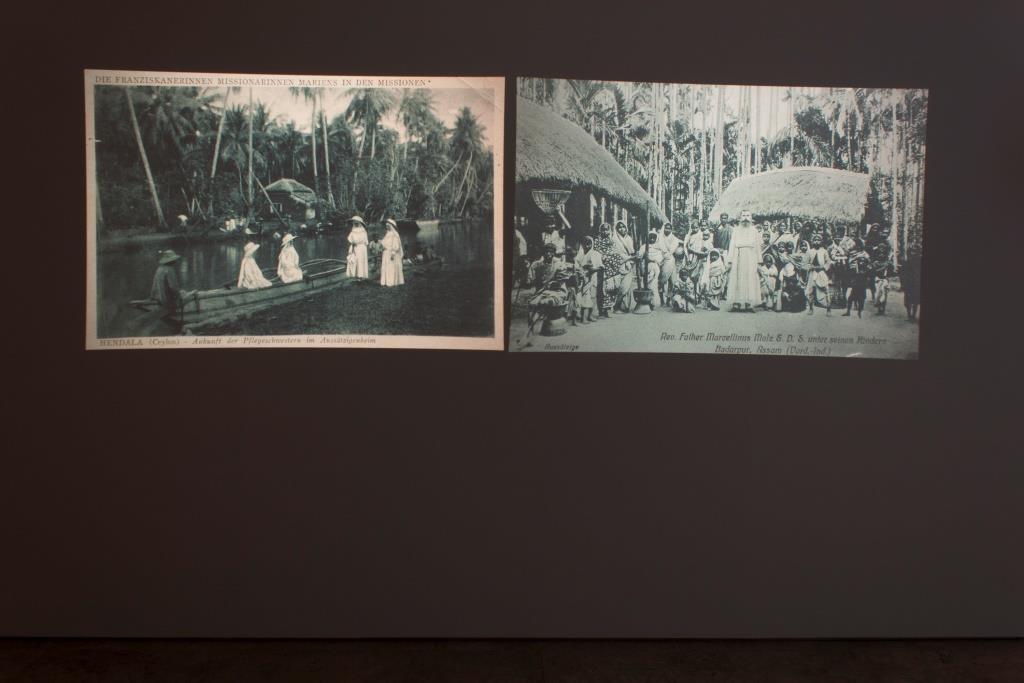Kader Attia’s practice explores the legacy of colonialism on Western and Non-Western cultures. During his childhood, the artist spent time with relatives in Algiers as well as in the Paris suburbs. Growing up between two countries – a former colonising power and a colony – was key in shaping his identity.
Inspired by the anarchist philosopher Pierre-Joseph Proudhon (1809-1865) and the anti-colonial thinking of Frantz Fanon (1925-1961), Attia is concerned with strategies of ‘re-appropriation’ through which Non-Western cultures can be reclaimed from colonisation. By first acknowledging the ‘dispossession’ that occurs when the influence of the Non-Western world on Western society is disregarded, Attia believes that ‘repair’ can then be achieved through cultural exchange.
Dispossession (2013) is an installation that examines the role of Christian missionaries in the colonisation of African cultures. The Vatican has a collection of over 80,000 rarely shown African artefacts, brought back to Europe by missionaries during the colonial era. These objects are presented as slides alongside a video series of four interviews conducted between Attia, an anthropologist, an art historian, a priest and a lawyer. The subject of repatriation is central to the installation as it considers the political and psychoanalytical questions that arise from the collecting of these objects.
Through their Collections Fund at Frieze, the Contemporary Art Society acquired two moving image works by Sir John Akomfrah RA (b. 1957) and Kader Attia for Middlesbrough Institute of Modern Art, Teeside University (MIMA) at Frieze London in 2016. MIMA sees itself as a ‘useful’ museum, an institution with a social function that repurposes art as a tool for change. It seeks to play a civic role through a focus on education and community building, and these topics resonate with the diverse users and constituent groups it serves, which include the highest number of asylum seekers in the country per head of population.


